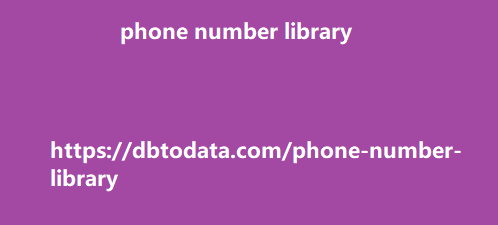It will take about two weeks to roll out fully. Recovery post-update is not guaranteed, continuous website improvement is a must. The August 2023 core update from Google aims to improve how the search engine delivers results to users. This update has the potential to significantly affect the performance of professionals and webmasters like us to keep an eye on how our websites perform as this core update rolls out. Unlike other updates, this one is holistic and updates howwebsites, making it important for SEO . , it doesn’t necessarily point to any one mistake—it’s just that there are now other pages that Google thinks provide more value than yours, based on its new ranking guidelines.
Google’s ranking release history page shows
us when this update started, officially. I recommend checking it now and then to see when the update is finished. What to do after the August 2023 Core Update? It depends. If your pages are seeing a boost in rankings, then that’s great—it means your SEO is being rewarded. If you’re seeing some volatility, then it’s time to review your website as a whole to determine if it’s being caused by the core update or some other things you might have changed on your website (coincidentally at the same time.) No need to panic, since Google themselves have provided their advice on how to manage this: It’s important to understand that a drop in rankings doesn’t necessarily mean there’s something wrong with your web pages Google also provided a list of questions to reflect upon if your site experiences a core update impact.
I summarized the official Google advice on core
update recovery in another post. It’s worth noting that while minor recoveries in rankings may occur between core updates, the most significant changes typically happen after subsequent core updates. Google’s Advice for Boosting Page Rankings After the August 2023 Core Update Google advises websites to self-assess their content since the focus of organic search should be on delivering relevant answers and resources to users. Take a look at your worst-performing pages, and ask yourself these questions: Does my content meet the user’s search intent? Does my content provide original information or analysis? Does the content have any spelling or stylistic issues? Is my content easy to understand? Is my content trustworthy, and does it reference other authoritative sources? Was my content written with the user and their experience on my page in mind? Was my content written by someone who knows the given topic? Do my on-page factors (such as title tag and headings) provide a descriptive, cohesive, and helpful summary of my content? Is the content mass-produced or spammy? The bottom line that Google is getting to is this: make sure that you have a high-quality website that provides high-quality content.
Follow that, and you should be fine. I also suggest
that you check out the SEO checklist and helpful content update guide that I prepared, which cover the best practices to help your website recover its rankings. Impact and Recovery after a Core Update Ranking fluctuations and impact post-update seem normal, and what we’re seeing is similar to the last core update. Lots of SERP volatility. SERP volatility from SEMRush sensor for August 2023 I predict that the trend for volatility will also be similar to what we saw in March—volatility will be highest within the first week, before slowly settling and returning to normal around days 12-14. After that, what we can expect in the next week or two is Google launching another update reversal to roll back any elements that have led to “bad” search results during the update rollout.
I can only speak for myself, we are fortunate that
we have not seen any of our current clients being directly impacted by the August 2023 core update. Even most of our clients have seen positive patterns in their rankings, but I believe this is a result of our continuous optimizations versus a direct impact from the core update. And now if you are negatively affected by the August 2023 core update, have some patience, as it will typically take several weeks or months for pages to recover rankings lost due to a core update if your website improvements warrant it. Remember that Google is constantly tweaking its algorithms. It may release minor updates between the broad core updates that can positively impact pages that have made changes in the meantime.
Key Takeaway As I have always said—
SEO is a long game. It means you algeria phone number library will have to constantly update your website and keep up with any algorithm changes to ensure your website meets what Google is always looking for: a trustworthy website that provides valuable answers for users. So when Google comes up with an update, that just means you have to reevaluate how you’re providing that value to your audience. So if you consistently strive to make your website highly relevant through the right methods, then there’s no need to be alarmed by the August 2023 Core Update. As an SEO specialist, I’m closely monitoring the impact of this update and will update this post when I find anything noteworthy regarding search trends or other relevant factors.
The 504 Gateway Timeout Error. It’s one of the
many server-side issues that prevents by identifying and addressing the needs of your your website from loading properly. It’s frustrating to see, especially for your users. Think of it like walking up to a busy restaurant; if your waiter doesn’t come to your table in time, you will get frustrated and consider leaving–that’s what your users will do if they see a 504 error on your website. And every second it’s up, it’ll keep hurting your website’s performance and rankings. So how do you fix a 504 Gateway Timeout error? Well, keep reading. This article will help you understand them in detail, and teach you how to diagnose and fix it. What is a 504 Gateway Timeout Error? A 504 Gateway Timeout error is one of the many status codes that can be returned by a web server.
Whenever a user wants to load a page on your
website, their web chine directory server will attempt to communicate with an upstream server, on which all of your website’s content and data is stored. If this connection is successful, then the page will load like normal. But in this step, mistakes can happen. In the case of 504 errors, the mistake is this: these two servers are unable to communicate fast enough–which prevents the page’s content from being sent, leading to a timeout of sorts. Webmaster’s Note: This post is part of our advanced guide to Technical SEO, where I cover everything you need to troubleshoot common website errors.







